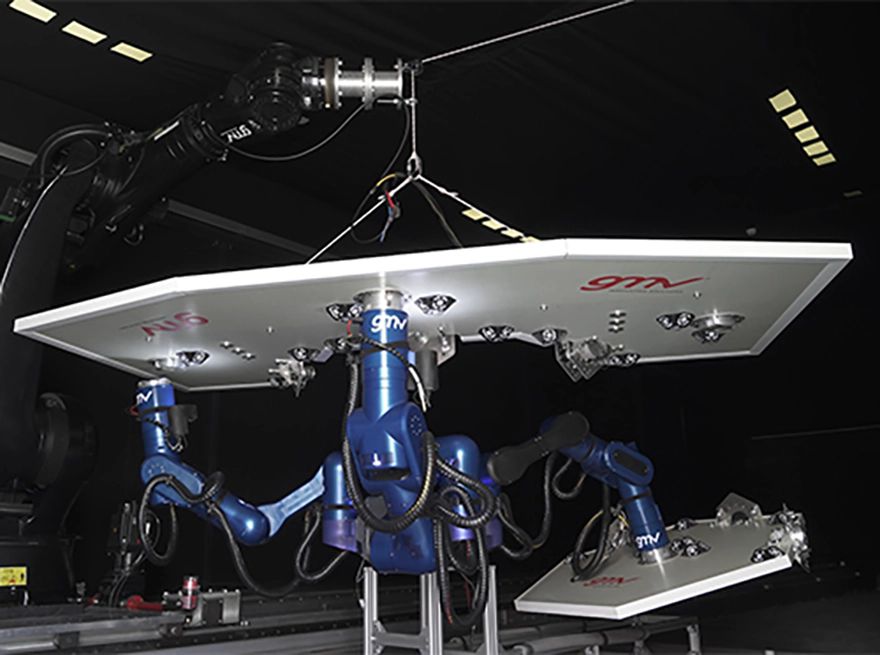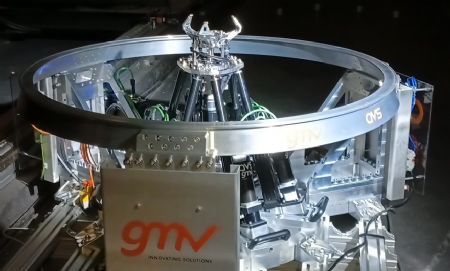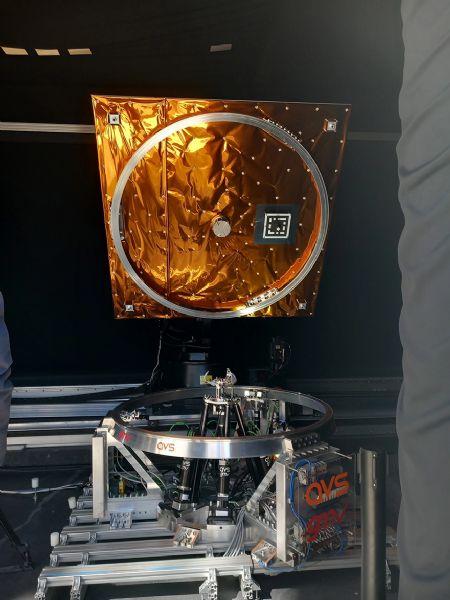 The MIRROR robot
The MIRROR robotAs the space ecosystem continues to grow and diversify, bringing with it a new economic era, it has become necessary to address issues related to space sustainability, to ensure that space can be used in a responsible way over the long term. The multi-national technology firm
GMV has become a leader in the space industry, with a firm commitment to performing its space-related activities in a socially and environmentally respectful way.
The company is now performing work and testing at its exclusive platform-art test bench. This work involves a range of important technologies for removing space debris, and for performing in-orbit maintenance, refuelling, and assembly of complex infrastructure and elements.
In recent years, the space industry has experienced a profound transformation, driven by public-sector initiatives as well as private investment. Specific concepts from the ‘New Space’ paradigm are now playing a fundamental role in this evolution, such as reducing costs through economies of scale, intensive use of commercially available off-the-shelf (COTS) components, standardisation, and acceleration of development cycles.
More than 17,000 satellites have so far been launched into space, and about 11,500 of them are still there, with more than 9,000 still in operation. In the near future, this number will rapidly increase with the planned launches of mega-constellations, which are made up of hundreds or even thousands of satellites.
To confront the demands imposed by these rising numbers, there will be a need for an integrated in-orbit transport and services ecosystem, developed under the appropriate conditions. Firstly, there must be a commitment to performing space-related activities in a socially and environmentally respectful way. This includes work performed by the European Commission (EC) on new space legislation and the European Space Agency’s ‘zero-debris’ approach, because initiatives like these are essential for achieving space sustainability. Secondly, there is a need for technologies that are able to satisfy new, emerging needs, in terms of both performance and costs.
 Pictured right: CAT
Pictured right: CATAs part of this focus on sustainability, ESA and the European Union have taken on a proactive role by preparing the new generation of Earth observation satellites in a way that will allow their removal at the end of their useful life, or if they malfunction. Four of those satellites belonging to the new generation of Earth observation missions (Copernicus) are already regulated by the ESA’s design-for-removal interface requirements document, and they are already being equipped with the equipment known as MICE (a mechanical interface for end-of-life capture, developed in Spain by GMV in collaboration with AVS), along with a series of navigation assistance devices.
This will facilitate the capture and removal from orbit of non-cooperative satellites in the future, when they have reached the end of their useful life or malfunction. Also in collaboration with AVS as part of an ESA contract, GMV is developing the CAT capture system, which is an essential element of active removal of the Copernicus satellites already equipped with the MICE interface, within the newly established five-year limit.
If we want to continue making use of space in the future, it is essential to see it as a ecosystem that must be protected, just like our oceans and forests. We are not always aware of how much we depend upon satellites. However, each of us interacts with about 100 satellites every day, which provide us with essential services such as Earth observation, meteorology, telecommunications, satellite navigation, geopositioning, and bank transfers. All of this highlights the importance of viewing space as a new ecosystem to be protected.
At its exclusive platform-art robotics laboratory, GMV is now testing specific technologies that will play a key role in the European context, while contributing to the future ecosystem of in orbit transport, maintenance, and debris removal.
Robotic technologies that allow capture and removal by the service provider, such as development of a compatible end effector and grippers, optical navigation, avionics, and control functions, are among the elements that have reached an advanced phase of development. All of these elements are integrated into a unified system know as ‘CAT: Return Capture Payload Bay’.

CAT is a robotic space debris removal system that has been designed as a specialised payload. It acts in conjunction with a service vehicle and its guidance, navigation and control (GNC) system, to allow approach, synchronisation, capture, stabilisation, and securement of the final assembly, so that the malfunctioning or uncontrolled spacecraft can be removed from orbit. It consists of six arms and a gripper that can capture the non-operational satellite that must be removed.
In-orbit maintenance and assembly will also play an important role in the economic future of space, and will contribute to achieving a sustainable space ecosystem, by optimising launch costs and facilitating the design of new flexible and scalable missions. In this area, launching and in-orbit assembly of large structures will become a recurring operation. The ESA is now funding development of a multi-arm assembly robot known as MIRROR. GMV is leading this project, and it has now designed the first European prototype for a self-relocatable robotics system for in orbit operations.
Specifically, this equipment can perform in-orbit assembly of large structures while also offering services for maintenance, repair, and updating for a variety of space vehicles and infrastructure elements.
Finally, but no less importantly, the ability to provide in-orbit services can be a way of prolonging useful life, improving performance, and even allowing dynamic reconfiguration of mission objectives. In this area, the design of modular spacecraft and the capacity for refuelling are important factors. The ASSIST mechanical device is the first and most advanced European initiative designed to standardise refuelling interfaces for satellites. Based on an open-interface approach, this initiative is currently in progress, to prepare for its eventual in-orbit demonstration.